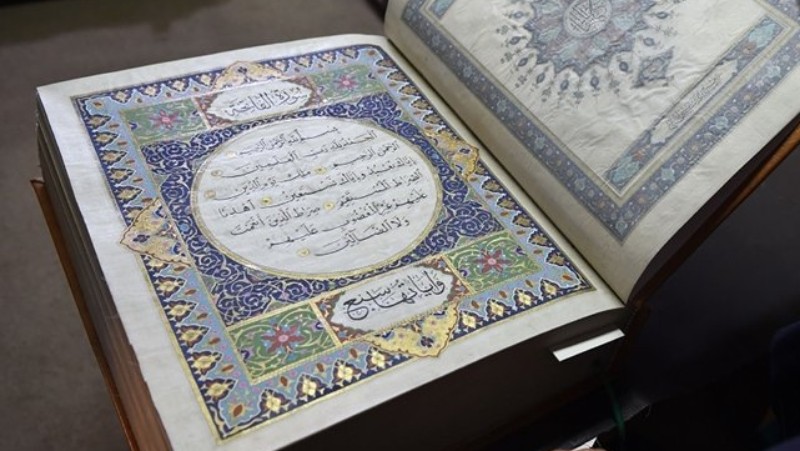Each of the Islamic holy book’s 610 pages was produced by hand in a painstaking process that took a team of 38 calligraphers and artists specialising in miniatures nearly two years to finish.
Bound in goat leather and weighing 8.6 kilograms, the Koran was produced by Afghan artisans, many of them trained at British foundation Turquoise Mountain in Kabul.
“Our intention was to ensure that calligraphy does not die out in this country – writing is part of our culture,” one 66-year-old master calligrapher* said in a cramped office inside Turquoise Mountain’s labyrinthine mud-brick and wood-panelled complex.
With the Koran considered a sacred text, calligraphy is highly venerated in Islam and Islamic art.
“When it comes to art we cannot put a price on it. God has entrusted us with this work (the Koran)... and this means more to us than the financial aspect,” the master artist continued.
Using a bamboo or reed ink pen, the master artist and his fellow calligraphers spent up to two days carefully copying Koranic verses onto a single page – sometimes longer if they made a mistake and had to start again.
They used the Naskh script, a calligraphic style developed in early Islam to replace Kufic because it was easier to read and write.
The decoration around the script, known as illumination, was more time-consuming, each page taking more than a week to complete.
A team of artists used paint made from natural materials, including ground lapis, gold and bronze, to recreate the delicate patterns popular during the Timurid dynasty in the 15th and 16th centuries in the western city of Herat.
“All the colours we have used are from nature,” a master miniature artist who was responsible for creating the vibrant colours used in the Koran said.
The artist said working on silk fabric for the first time was challenging. The locally sourced material – all 305 metres of it – was treated in a solution made from the dried seeds of ispaghula, or psyllium, to stop the ink from spreading.
Turquoise Mountain began work in 2006 in Kabul with the aim of preserving ancient Afghan craftsmanship, including ceramics, carpentry and calligraphy.
It hopes the silk Koran will generate demand for more handmade Islamic religious texts that could create employment for its artisans and help finance the institute.
“We will show it to other Islamic countries to see if it is possible to create job opportunities for graduates to work on another Koran,” said the organisation’s Afghan director.
For now it will be kept in a specially made hand-carved walnut wooden box to protect its delicate pages from the elements at Turquoise Mountain’s offices, which are in the restored Murad Khani, a historic commercial and residential area in Kabul’s oldest district.
There Turquoise Mountain has trained thousands of artisans with the support of Britain’s Prince Charles, the British Council, and USAID.
“The copying of the Koran onto silk is very rare,” country director Nathan Stroupe said.
He said the project has been “an amazing way to train our students at an incredibly high level in a very traditional type of work”.
“If a Saudi prince or a book collector in London... was interested in it, we would be thinking in the $100,000 (B3.26 million) to $200,000 (B6.53mn) (price) range,” he added.
* UPDATE: Following the occupation of Kabul during the withdrawal of US troops from Afghanistan, the Turquoise Mountain Foundation asked that specifically names and images of artisans identified in the article be protected by having their names and any images that may identify them removed.








